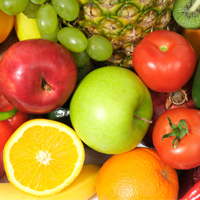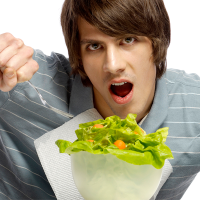pH Miracle Diet Basics

The pH Miracle diet is the newest phenomenon to strike the dieting world. Health experts have noticed that popular diets seem to go in waves. While the 90s were marked by the low-fat diet craze, the last six to seven years have been focused on low-carbohydrate diets like Atkins, the South Beach Diet, Protein Power and Sugarbusters. As people become frustrated with each type of diet, they look for something new to try. The pH Miracle diet is the focus of a lot of new interest.
The pH miracle diet is so appealing to people because it is a complete 180-degree turn from the high-protein, low carbohydrate diets of the past few years. The pH Miracle diet, also called the alkaline diet or the Young Diet, after its creator Robert Young, has a totally different approach to nutrition. Many holistic doctors and nutritionists see it as a more balanced approach to nutrition that takes the body’s true needs into account.
Basically, the human body has a pH that is slightly alkaline. The theory is that since the human body runs at this pH, our diet should be comprised of mostly alkaline foods. The standard American diet has many foods that are considered acidic, such as animal protein, sugar, caffeine and packaged foods. All of these foods disrupt the pH balance of the body and cause a whole host of problems. The proponents of the pH Miracle diet say that all of these acidic foods actually disrupt the body’s use of alkaline minerals. These minerals include sodium, potassium, magnesium and calcium, which make people prone to chronic diseases.
This is the real crux of the importance of the pH diet. The nutrition and health community has come to realize that what a person puts into their body has a profound effect on their overall health. Although the mainstream medical community has emphasized a balanced diet including fresh fruits, vegetables, meats and dairy products, the pH diet takes this a step further. It points out that the acidic foods actually rob your body of essential minerals. Those who follow the pH miracle diet are avoiding foods that can be disastrous to their health.
Many of the foods that we eat commonly are considered no-nos on the pH miracle diet. One of the most surprising omissions is the absence of wheat products. The FDA recommends whole-wheat products for better health. Yet according the pH diet, grains like wheat, millet, oats and rice are acidic and harmful. The alkaline grains of buckwheat, quinoa and spelt are favored for their alkalizing benefits.
Generally, all meats and dairy are omitted on the pH Miracle diet. If you’re worried about protein, goat milk is slightly alkaline. There is also protein provided from vegetarian options like beans, tofu and certain nuts and seeds. Most vegetables have alkalizing effects, except for mushrooms. Fruits are limited to coconut, grapefruit, lemon and lime.
Those that have tried the pH miracle diet say that they feel massive effects on their health within the first few weeks. Lowering the intake of processed foods and eating more vegetables is good health advice for everyone, whether or not they follow the specifications of this particular diet. In fact, this has been one of the major criticisms of the pH miracle diet. Opponents say that if people are already eating fresh foods and drinking plenty of water, then the diet will have no effect. They disregard the acid/alkaline balance theory.
Another important thing to consider is that there has been no scientific testing of the theories behind the pH miracle diet. Also, many conventional medical doctors see no benefit to the program. However, the principles behind the diet are based on holistic medicine and Chinese medicine, which have been around for centuries. The ph Miracle diet principles are currently being studies at John Hopkins’s university and by Dr. Neil Solomon of the United Nations. Soon the critics may have to re-evaluate their stance on the diet’s scientific basis.


